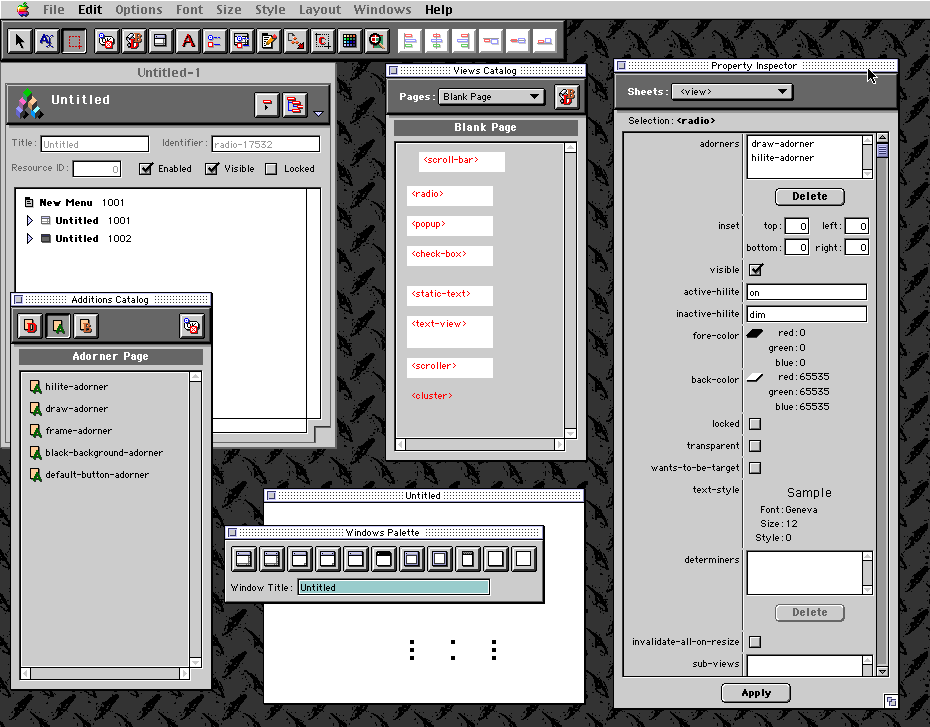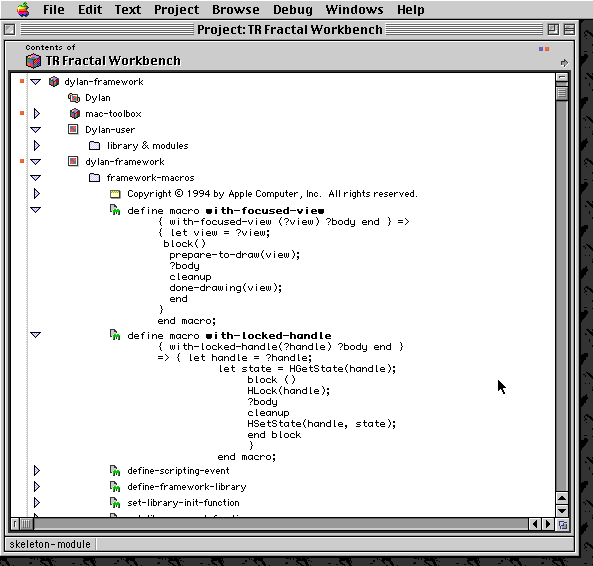Apple Dylan Screenshots - Misc¶
Interface Builder¶
Apple Dylan came with a very preliminary interface builder, to accompany its MacOS-specific GUI framework. It was not nearly complete, but both the framework and the interface builder showed amazing promise. Here is a shot of the interface builder:

The interface builder of Apple Dylan.¶
Tools were included for generating menus, windows, dialogs, buttons, checkboxes, images, and all the usual GUI components. Notice the property inspector examining the non-standard default button with a red border! This is a control manager button drawn by code from the framework, but its behavior could be altered by specifying “determiners” and “adorners” that would change the object’s run-time behavior. These corresponded directly to code entities available in the framework. User interfaces could be tested out “live” by dynamically assembling interface objects.

A control manager button in Apple Dylan.¶
Macros¶
Now we come to a few of the more obscure details of Apple Dylan. The macro system was not yet complete, but worked well enough to allow inclusion of some simple macros such as “with-locked-handle” shown below. This corresponds roughly to using a simple stack-based handle locker class in C++, but instead it is done by performing a macro rewrite of the source. Note that other Dylan implementation have gone much farther towards implementing the whole Dylan macro system.

The uncompleted macro system of Apple Dylan.¶
Lisp Leftovers¶
There were some dark corners and secrets in Apple Dylan. Here we see that the Macintosh Common Lisp “implementor” menus are available. Take a look at the tantalizing option allowing you to switch between prefix and infix Dylan. Nope, this did not mean that Apple Dylan would let you transform one syntax to the other on the fly. But it did mean that many of the internals, some of which come as source with the Dylan Technology Release, were written in prefix (Lisp-style) Dylan, and at least internally, both the original and newer syntax were supported. Prefix Dylan was officially deemed a dead end, but one can imagine a future IDE that would truly allow both to be intermixed freely, attempting to give users the best of both. This is yet another aspect of what certainly could have been the most remarkable development environment of its time, and a rich source of ideas for the future.

The Macintosh Common Lisp “implementor” menus was available in Apple Dylan.¶